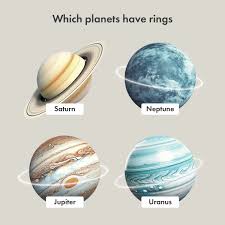Stamp: Thebes (imaginary figure) (Japan 2020)
Thebes (imaginary figure) (Japan 2020)
05 February (Japan ) within release Astronomical Worlds, Series 3 goes into circulation Stamp Thebes (imaginary figure) face value 84 Japanese yen
| Stamp Thebes (imaginary figure) in catalogues | |
|---|---|
| Stamp Number: | Sn: JP 4373g |
| Yvert et Tellier: | Yt: JP 9754 |
| Sakura: | Sak: JP C2444g |
Stamp is vertical format.
stamp from mini sheetAlso in the issue Astronomical Worlds, Series 3:
- Stamp - Betelgeuse (imaginary figure) face value 84;
- Stamp - Taurus Crab Nebula (part) face value 84;
- Stamp - Lyra Ring Nebula face value 84;
- Stamp - Titan face value 84;
- Stamp - Amalthea (imaginary figure) face value 84;
- Stamp - Thebes (imaginary figure) face value 84;
- Stamp - Enceladus face value 84;
- Stamp - Callisto face value 84;
- Mini Sheet - Astronomical Worlds Series III face value 10*84;
Stamp Thebes (imaginary figure) it reflects the thematic directions:
The Moon is Earth's only natural satellite. It orbits at an average distance of 384,400 km (238,900 mi), about 30 times the diameter of Earth. Tidal forces between Earth and the Moon have over time synchronized the Moon's orbital period (lunar month) with its rotation period (lunar day) at 29.5 Earth days, causing the same side of the Moon to always face Earth. The Moon's gravitational pull – and to a lesser extent, the Sun's – are the main drivers of Earth's tides.
Outer space (or simply space) is the expanse that exists beyond Earth's atmosphere and between celestial bodies. It contains ultra-low levels of particle densities, constituting a near-perfect vacuum of predominantly hydrogen and helium plasma, permeated by electromagnetic radiation, cosmic rays, neutrinos, magnetic fields and dust. The baseline temperature of outer space, as set by the background radiation from the Big Bang, is 2.7 kelvins (−270 °C; −455 °F)
A planet is a large, rounded astronomical body that is generally required to be in orbit around a star, stellar remnant, or brown dwarf, and is not one itself. The Solar System has eight planets by the most restrictive definition of the term: the terrestrial planets Mercury, Venus, Earth, and Mars, and the giant planets Jupiter, Saturn, Uranus, and Neptune. The best available theory of planet formation is the nebular hypothesis, which posits that an interstellar cloud collapses out of a nebula to create a young protostar orbited by a protoplanetary disk. Planets grow in this disk by the gradual accumulation of material driven by gravity, a process called accretion.
A star is a luminous spheroid of plasma held together by self-gravity. The nearest star to Earth is the Sun. Many other stars are visible to the naked eye at night; their immense distances from Earth make them appear as fixed points of light. The most prominent stars have been categorised into constellations and asterisms, and many of the brightest stars have proper names. Astronomers have assembled star catalogues that identify the known stars and provide standardized stellar designations. The observable universe contains an estimated 1022 to 1024 stars. Only about 4,000 of these stars are visible to the naked eye—all within the Milky Way galaxy.




